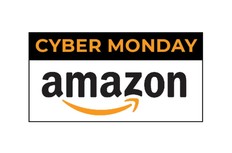It is faintly embarrassing that we engage in such braggadocio and then expect a participation ribbon
Get the latest from John Ivison straight to your inbox

One of the less appealing things about this country is that its big talk often outstrips its contribution.
We scored a goal in the World Cup and claimed history had been made. History would have been made if we’d won.
The NP Comment newsletter from columnist Colby Cosh and NP Comment editors tackles the important topics with boldness, verve and wit. Get NP Platformed delivered to your inbox weekdays by 4 p.m. ET.
Likewise, we announced on Sunday that we will ship off another frigate to patrol the Indo-Pacific and launch Team Canada trade missions to create “inclusive opportunities.” Suddenly, we are sending “a clear message to the region that Canada is here,” in the words of Foreign Affairs Minister Mélanie Joly.
The truth is that the Americans have bullied us into following their lead in trying to isolate China and, two years later than scheduled, we have produced a modest Indo-Pacific “strategy” that has much to be modest about.
The price of being allowed inside the protectionist wall of a “Buy North American” policy on electric vehicles is to do as we’re told on China.
Ottawa’s new Indo-Pacific strategy, sprinkling $2.3 billion over five years across just about every department in government, is not going to have Beijing pulling up the drawbridge.
Many of the details have still to be released but there is very little in the strategy that will dissuade Beijing’s agents seeking to influence Canadian elections or intimidate the Chinese diaspora in this country: there is no foreign influence registry; no watchdog office to counter China’s efforts across business, politics and academia; and, no proposals to allow Canada’s spy agency to share information more freely with law enforcement and civil society. The strategy talks of protecting Canadian infrastructure, citizens and post-secondary institutions from “malign actors,” but it remains to be seen how.
All of that said, the new strategy should be welcomed because Canada has finally communicated a position in the values war that we have been engaged in tacitly. This was the most unequivocal statement from the government that China is “a disruptive global actor” and that this country’s response will no longer be diplomatic cruise-control.
-

New Indo-Pacific strategy seen putting Canada in ‘lockstep’ with U.S. on China
-
Canada launches new Indo-Pacific strategy, focus on 'disruptive' China
For years, this government has been trying to use the Americans and the Chinese as counterweights. It came into power pursuing a policy of “comprehensive engagement” with China.
That idea became increasingly untenable as the Biden Administration released its China strategy, identifying the People’s Republic as the most serious long-term challenge to the international order.
In a speech last June, Secretary of State Antony Blinken said that going forward the U.S. will “sharpen our competitive edge” by investing billions in the domestic semiconductor industry, imposing export controls, protecting academic research and raising the bar on investment screening.
Blinken warned the business community that “the price for admission to China’s market must not be the sacrifice of our core values or long-term competitive and technological advantages.”
At the same time as it invests in technology and competes aggressively with China, Blinken said America will align with its allies in new and existing bodies such as the Indo-Pacific Framework for Prosperity, the Quad (with Australia, Japan and India) and AUKUS, with Australia and the U.K.
Much of Canada’s Indo-Pacific strategy is the discount-brand version of the U.S. reaction to years of Chinese duplicity and anti-competitive behaviour.
Canada has already signed a joint action plan on critical minerals with the Americans to restrict exports and ordered three Chinese companies to divest shares in Canadian lithium miners.
Joly has repeated Blinken’s warning that there are geopolitical risks to doing business in China.
Again, there was a dearth of detail, but the plan seems to be to diverge, if not decouple, from China and attempt to fill the void by encouraging Canadian companies to trade with other Indo-Pacific countries, such as India and Indonesia, where Canada has been negotiating early-program trade agreements (the precursor to more comprehensive deals).
There is potential for Canada in the region. The government can point to the relative success of the Trans-Pacific Partnership agreement, signed in 2018 with a host of Asian-Pacific countries including Australia, New Zealand, Japan, Singapore and Vietnam, where exports with those five signatories grew 8.3 per cent in the three years after ratification, outpacing the growth of exports to the rest of the world.
This is progress. The cabinet and the public service are now on the same page, after years where the ambassador in Beijing, Dominic Barton, was making the case “we need to do more in China,” while many people in Ottawa recognized that the Chinese were not interested in reciprocal relations but were very interested in taking advantage of the Trudeau government’s naivete.
India is key to this rebalancing, and it is no surprise to see New Delhi’s new high commissioner in Ottawa using this newfound leverage to pressure the Liberal government to crack down on funding for the Sikh independence movement. Relations between Narendra Modi and Justin Trudeau have been frosty since the prime minister’s disastrous visit to the sub-continent in 2018.
Trade between the two countries is meager and the Indian government has been suspicious of Trudeau since he attended a Sikh event that featured Khalistani flags. Bridges clearly need to be rebuilt.
The reality is that the Japanese, South Koreans and others will be happy that Canada has formally declared its intention to strengthen and deepen relations. The increased military and intelligence contribution, though modest, will be welcome.
But putting a diplomat in Hawaii for the first time, while very nice for that individual, is not going to change the world.
It is faintly embarrassing that we engage in such braggadocio and then expect a participation ribbon.
• Email: jivison@postmedia.com | Twitter:
Get the latest from John Ivison straight to your inbox







